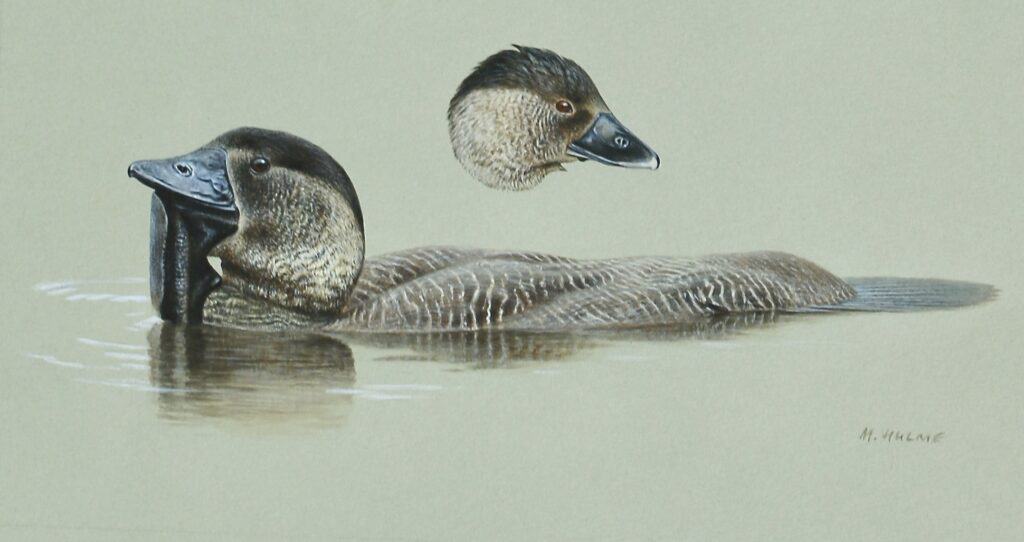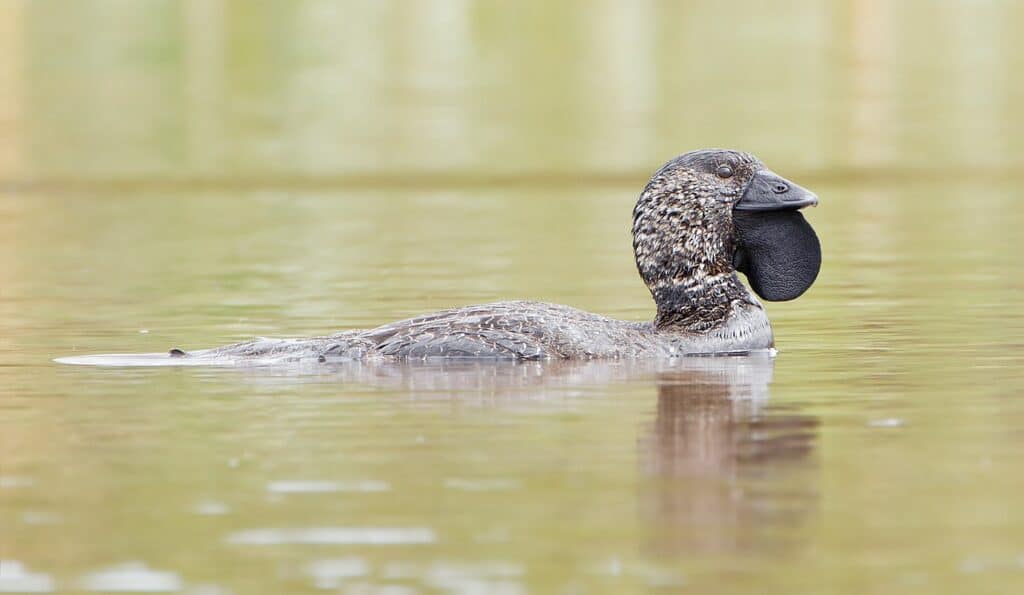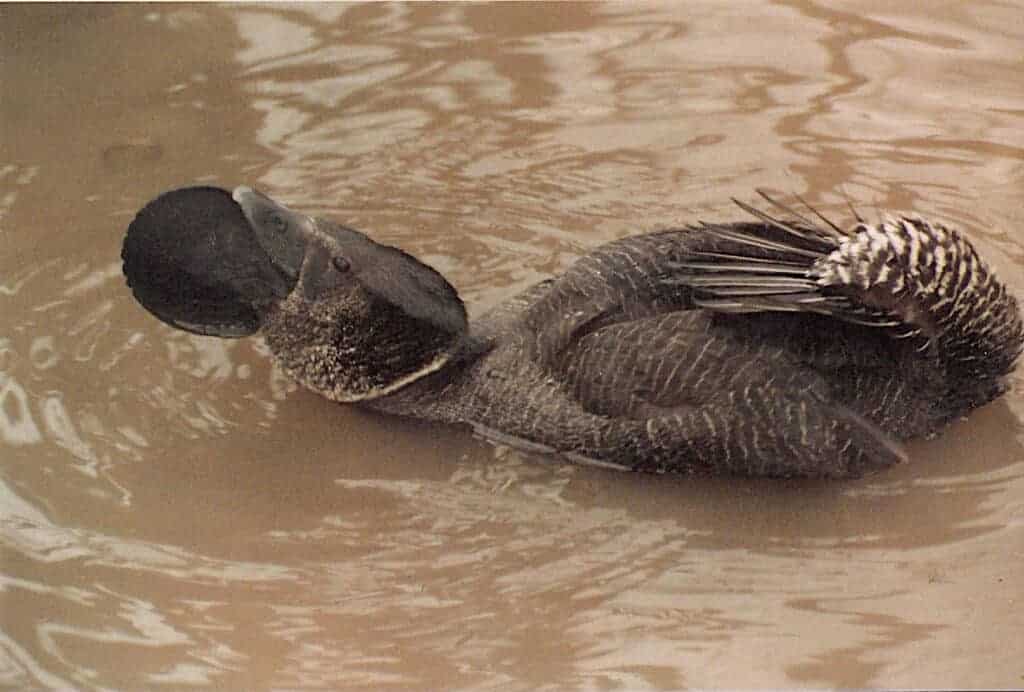Musk Duck


Musk Ducks are found only in Australia. As far as we know, there are none outside the continent in aviculture. There are two subspecies recognised:
- B. l. lobata of South West Auistralia
- B. l. menziesi of South East Australia (C South Australia E to S Queensland, S to Victoria) and Tasmania.
Biziura lobata
The contrast between duck and drake Musk Duck is striking, he is twice as big as she. Mating behaviour is a rough affair, with repeated chases over and under the water before the duck is caught and mated. Simon Tarsnane speculated that this chasing might be a necessary action to arouse fertility prior to copulation. Provision of an ‘escape’ area for females would be essential in an enclosed collection.
The musky odour giving rise to their common name is most pungent in the breeding season.
Ungainly on land, Musk Ducks spend most of their time on the water. Drakes particularly look very low in the water, masking their size. They are Australia’s largest duck with males sometimes weighing 3kgs. Despite their bulk, they can slip silently under the water when it suits them.
The repertoire of this species includes many sounds that the birds hear around them. Most unusually amongst the waterfowl, the Musk Duck is able to mimic snatches of human speech and regular sounds around them. A creaking gate, the click of a turnstile and a smoker’s cough were all imitated at Slimbridge when a small group of Musk Ducks were kept there in the 1980s. The vocal range of these Australian natives is wide, and includes an ear-piercing whistle as well as the lower registers that sound ‘human’ to us.

In 1979, a one-off permission to collect eggs and export them to the UK was granted by Wildlife Headquarters, the Australian Government’s wildlife agency. Along with Pink-eared Duck eggs, some Musk Duck eggs were brought to the UK and birds raised at Slimbridge and Pensthorpe.
Even if they were available, Musk Ducks would pose a significant challenge to the aviculturist. Mike Lubbock, of Sylvan Heights Bird Park, who made that 1979 expedition, observed:
‘They were devils, those birds. The male would try to kill any bird near them, including their own species. We couldn’t even rear them together, they had to be kept separately in quarantine.’
Nesting is in a small cupped platform of vegetation puled in from reeds or overhanging shrubbery. Unlike other members of the stifftail family, Musk Ducks line their nests with plenty of down. Todd suggested that 1–3 pale greenish-white or light buff eggs are incubated for 24-26 days. In the wild nests with up to 10 eggas have been found, but these may contain ‘dumped’ eggs.
FURTHER READING
Australian Museum, Animal Factsheets, Birds, Musk Duck, Biziura lobata
BirdLife Australia, Musk Duck
ten Cate, C and Fullagar, T.J. 2021.Vocal imitations and production learning by Australian musk ducks (Biziura lobata) Phil. Trans. R. Soc. B3762020024320200243 http://doi.org/10.1098/rstb.2020.0243
Harteman, J. Harteman Wildfowl Aviaries Australian Musk Duck
Share this page